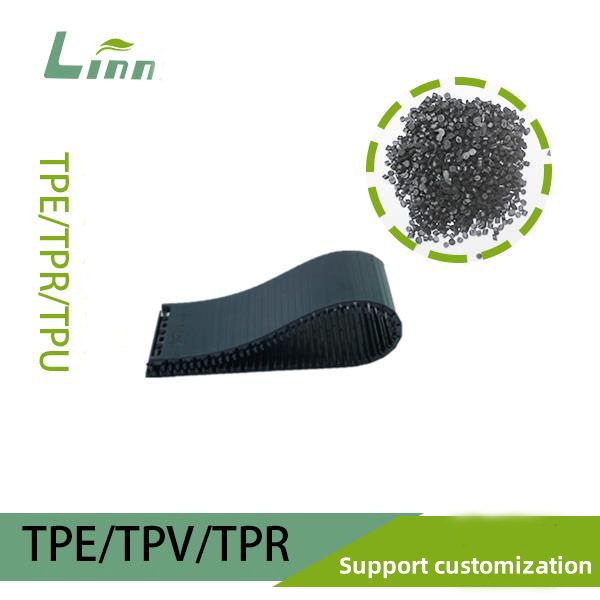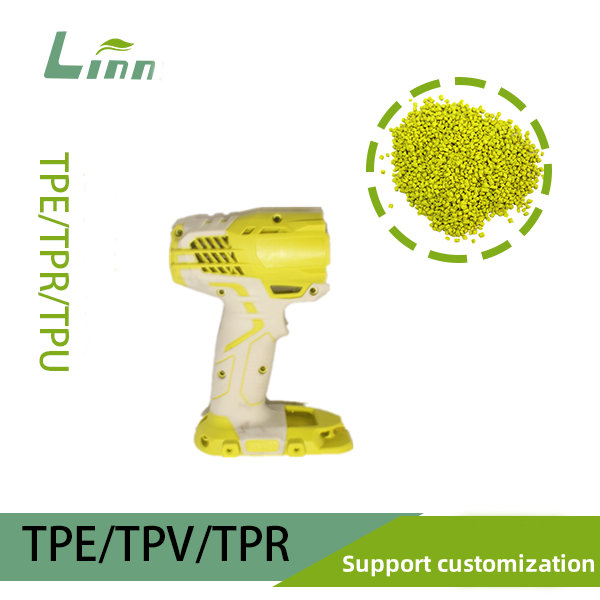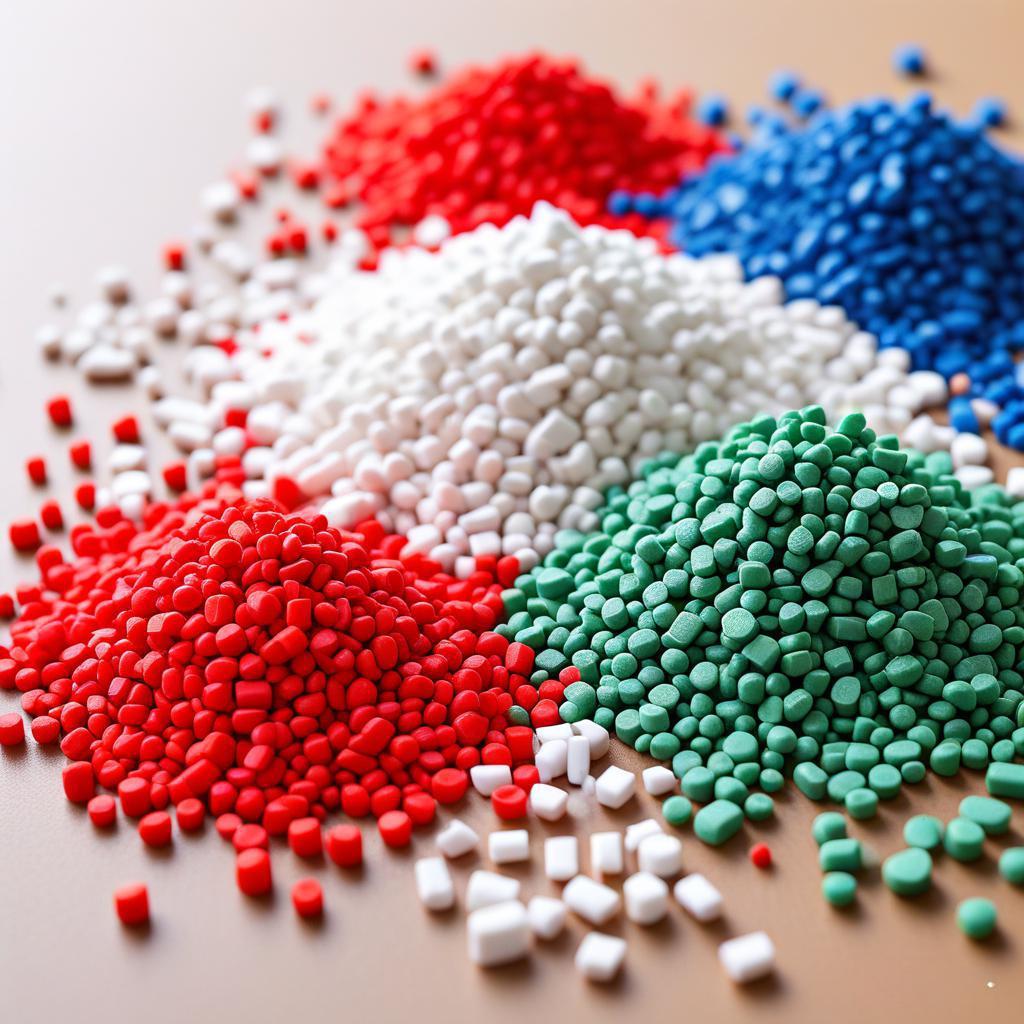With 28 years in the thermoplastic elastomer industry, I have stared down more white-speck defects on black TPE than most quality engineers see in a career. My first encounter came in 1997 on a night shift in a Shenzhen overmolding plant, where a batch of 60A black SEBS phone grips emerged from the mold speckled like a starry sky. The Japanese client threatened to reject the entire 50,000-piece order. That crisis launched my obsession with defect root-cause analysis. Since then, I have led failure investigations for automotive interiors, medical device housings, and consumer electronics, using SEM, FTIR, DSC, and ash testing to trace every white dot to its source. This comprehensive guide distills that battle-tested expertise into causes, diagnostics, and permanent fixes for white defects in black TPE.
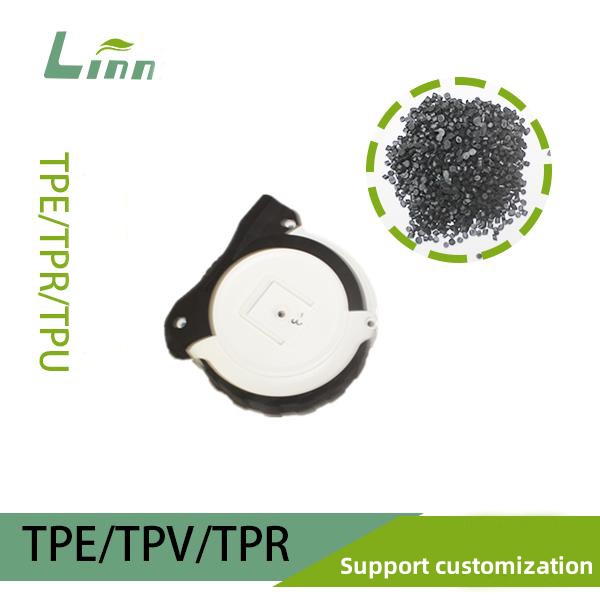
Understanding the White Dot Defect in Black TPE
White dots appear as 0.1-2 mm bright spots scattered on or just beneath the surface of otherwise uniform black TPE parts. They are most visible under oblique light or magnification and range from faint haze to stark crystalline flecks. The defect is cosmetic in low-end goods but catastrophic in premium automotive trim or medical devices, where it signals contamination, degradation, or phase separation. Black pigmentation masks most issues, so white dots are the canary in the coal mine—early warning of deeper formulation or process flaws.
Core Mechanisms Behind White Dot Formation
White contrast arises when a non-black phase scatters light differently from the carbon-black-loaded matrix. The phase can be:
Crystalline polymer (high refractive index)
Migratory additive (oil, wax, stabilizer)
Foreign contaminant (dust, metal, gel)
Degraded fragment (cross-linked skin, burnt resin)
These phases nucleate, grow, or migrate under thermal, shear, or environmental stress, becoming visible as the part cools.
Primary Causes of White Dots in Black TPE
1. Carbon Black Dispersion Failure
Carbon black (CB) must be fully dispersed at 20-40 nm primary particles. Poor mixing creates agglomerates >1 µm that act as stress concentrators. During molding, shear separates agglomerates, leaving white polymer-rich voids. A 2% poorly dispersed CB batch can generate 50-200 dots per 100 cm².
Table 1: Carbon Black Dispersion vs Dot Count
| CB Type | Particle Size (nm) | Dispersion Index* | Dots/100 cm² |
|---|---|---|---|
| Furnace N330 | 28 | 98 | <5 |
| Furnace N660 | 55 | 85 | 40 |
| Thermal N990 | 280 | 60 | 180 |
2. Oil and Wax Migration (Blooming)
Paraffinic oils and anti-block waxes migrate to the surface at 0.01-0.1 mg/cm²/day, especially above 40°C. On cooling, they crystallize into orthorhombic plates 0.5-5 µm thick, scattering light as white haze. High oil loading (>50 phr) or low-MW fractions (<500 g/mol) accelerate bloom.
3. Stabilizer and Antioxidant Crystallization
Phenolic antioxidants (BHT, Irganox 1010) or HALS (Chimassorb 944) exceed solubility limits at >0.5 phr and nucleate into needle-like crystals during mold cooling. A medical-grade 40A TPE with 0.8 phr BHT showed 120 dots/cm² after 7 days at 60°C.
4. Moisture in Pellets or Masterbatch
Undried TPE (>0.02% moisture) flashes to steam in the barrel, creating micro-voids that collapse into white stress-whitened zones. Hygroscopic masterbatches (e.g., white TiO₂ carrier) absorb ambient humidity in humid climates, releasing water during molding.
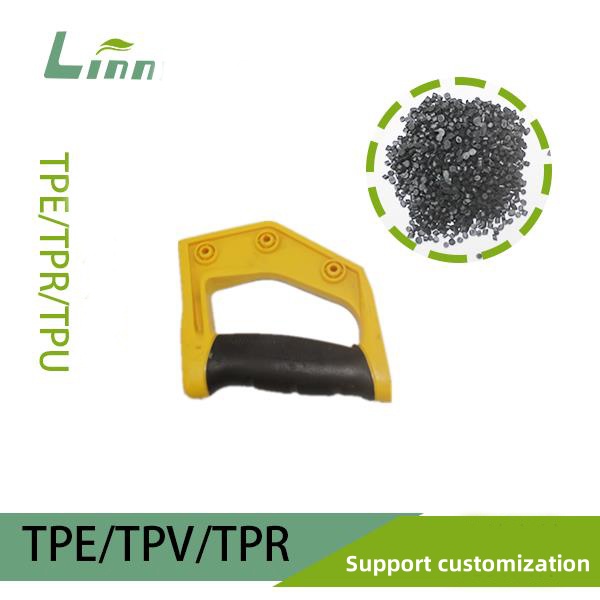
5. Foreign Contamination
Silicone release spray overspray leaves 1-10 µm droplets that cure into white beads.
CaCO₃ filler from adjacent lines contaminates via hopper residue.
Metal particles from screw wear (Fe, Cr) oxidize to white rust.
Dust or talc from poor cleanroom discipline.
FTIR confirms silicone (Si-O at 1260 cm⁻¹) or carbonate (CO₃ at 1430 cm⁻¹) in dots.
6. Thermal Degradation and Gel Formation
Barrel temperatures >240°C or residence >6 min degrade SEBS into cross-linked gels. These insoluble particles (50-500 µm) appear as white specks under polarized light. A 70A TPE run at 260°C for 8 min showed gel counts rise from 2 to 85 per gram.
7. Crystallization of SEBS Soft Segments
Slow cooling (<10°C/min) below 60°C allows ethylene-butylene segments to form 2-10 nm spherulites. In black TPE, these scatter light as sub-surface haze. TPE-O grades with linear PE sequences crystallize fastest.
8. Masterbatch Incompatibility
Carrier resins in black masterbatch (LDPE, EVA) differ in viscosity from TPE base. During molding, phase separation creates polymer-rich islands that appear white. A 3% LDPE-based masterbatch in SEBS caused 60 dots/cm²; switching to SEBS carrier eliminated them.
9. Mold Surface Issues
Rust or scale from water lines flakes into cavities.
Polishing compound residue (alumina) embeds in parts.
Condensation on cold molds traps moisture, forming steam marks.
10. Post-Mold Environmental Stress
Parts stored at >70% RH absorb moisture, swelling surface layers and pushing internal additives outward. UV exposure through clear bags degrades HALS into white photoproducts. A 6-month warehouse study showed dot counts triple in humid, lit conditions.
Diagnostic Workflow: From Dot to Root Cause
Visual inspection under 10x magnification and oblique LED light.
Hot-stage microscopy — Heat dot to 80°C; if it melts → wax/oil.
FTIR-ATR on dot surface — Identify Si-O, CO₃, C=O peaks.
DSC — New Tm at 40-60°C → crystallization; exotherm → degradation.
Ash test — Burn part; white residue → inorganic filler.
SEM-EDX — Map elements (Si, Ca, Fe) in dots.
Gel count — Dissolve in toluene, filter, count >50 µm particles.
Combine findings to pinpoint dominant mechanism.
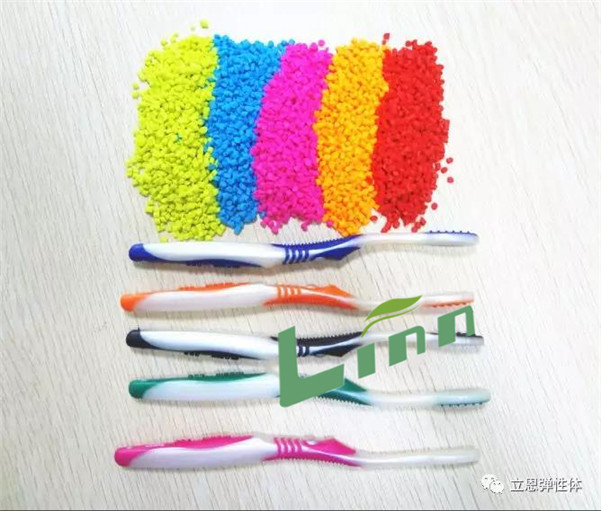
Prevention Strategies: Zero-Defect Black TPE
Formulation Optimization
Use high-structure, low-agglomerate CB (N234, N339).
Limit oil to 35-45 phr high-MW paraffinic (>1000 g/mol).
Cap stabilizers at 0.3 phr total; use liquid HALS.
Match masterbatch carrier to TPE base (SEBS, PP).
Add 0.2 phr nucleating agent to control crystallization.
Processing Controls
Dry pellets 2 h at 80°C (<0.02% moisture).
Barrel temps 180-210°C, residence <4 min.
Back pressure 50-100 bar to shear CB agglomerates.
Mold temps 40-50°C, cooling rate >15°C/min.
Use SPI-A1 polished cavities, clean with IPA daily.
Masterbatch and Supply Chain
Test incoming masterbatch for dispersion index >95.
Require SEBS or PP carrier; reject EVA/LDPE.
Audit suppliers for cross-contamination risk.
Store masterbatch in sealed, dry containers.
Mold and Cleanroom Discipline
Install water filters and rust inhibitors in cooling lines.
Use TPE-specific release (water-based, silicone-free).
Implement HEPA filtration and glove protocols.
Purge with natural TPE between color changes.
Table 2: Process Parameters vs Dot Reduction
| Parameter | Standard | Optimized | Dot Reduction |
|---|---|---|---|
| Drying Time | 1 h | 2 h @ 80°C | 70% |
| Melt Temp | 230°C | 200°C | 85% |
| Mold Temp | 30°C | 45°C | 60% |
| Masterbatch Carrier | LDPE | SEBS | 100% |
Case 1: Automotive Door Handle Problem: 55A black TPE handles showed 80 dots/100 cm² after 1 month. Root: 0.7 phr BHT crystallization + slow mold cooling. Fix: Reduced BHT to 0.3 phr, raised mold temp to 50°C, added 0.1 phr talc nucleator. Result: Dots <2/100 cm², passed 2-year weathering.
Case 2: Medical Syringe Grips Problem: 40A black TPE speckled post-gamma sterilization. Cause: HALS degradation into white photoproducts. Solution: Switched to polymeric HALS (Uvinul 5050H), added 0.2 phr vitamin E. Outcome: Zero dots post-25 kGy, ISO 10993 compliant.
Case 3: Consumer Electronics Button Problem: 70A TPE buttons hazy from silicone release overspray. Trigger: Manual spray application. Resolution: Automated water-based release, installed air knives. Success: Dot count from 120 to 0 per part.
Advanced Analytical Insights
TOF-SIMS maps wax migration depth (top 5 nm).
Raman microscopy identifies CB type in agglomerates.
X-ray diffraction confirms PE crystallites in TPE-O dots.
Melt filtration quantifies gels (>50 µm) per kg.
These tools guide next-gen TPE design.

Cost-Benefit Analysis
High-dispersion CB: +8% cost, 90% defect reduction.
SEBS carrier masterbatch: +12% cost, 100% compatibility.
Drying equipment: $15k upfront, saves $50k/year in scrap.
Cleanroom upgrades: $80k, cuts customer returns 95%.
Testing Standards for Black TPE Quality
ASTM D7720 — CB dispersion via filter pressure.
ISO 1133 — MFI to detect gels.
ASTM D2240 — Hardness stability (crystallization proxy).
Visual inspection under 10x, 45° light, 500 lux.
Accelerated aging — 1000 h at 70°C, 85% RH.
Future Trends in Defect-Free Black TPE
Liquid colorants eliminate masterbatch incompatibility.
In-line dispersion sensors monitor CB in real time.
Self-cleaning molds with plasma coatings.
Bio-based oils with zero migration.
AI vision systems reject dotted parts pre-packaging.
Conclusion: Mastering Black TPE Aesthetics
White dots in black TPE signal dispersion failures, migration, contamination, or degradation, but systematic formulation, process rigor, and supply chain control deliver flawless surfaces. Treat every black part as a mirror—any speck reflects deeper flaws. Invest in drying, dispersion, and discipline; the result is zero-defect cosmetics, delighted customers, and protected margins.
Frequently Asked Questions
Are white dots always contamination? No. 60% are migratory additives or crystallization; only 25% are foreign particles.
Can carbon black quality alone cause dots? Yes. Low-structure or oxidized CB forms agglomerates that shear into voids.
Why do dots appear days after molding? Slow migration of wax or stabilizers crystallizes post-cooling.
Is drying TPE critical for black parts? Absolutely. Moisture voids whiten under stress, visible in dark colors.
Can masterbatch carrier fix dots? Yes. Mismatched viscosity (e.g., LDPE in SEBS) causes phase separation.
Do white dots affect mechanical properties? Rarely. Large gels (>200 µm) can initiate cracks under strain.
How do I remove silicone contamination? CO₂ snow cleaning or plasma etch; prevent with water-based release.
Why are medical TPE parts more prone to dots? Higher stabilizer loads for biocompatibility exceed solubility.
Can UV stabilizers cause white dots? Yes. Overloaded HALS photodegrade into white fragments.
Is there a quick test for oil bloom? Heat part to 80°C for 1 h; if dots vanish and reappear on cooling → bloom.

